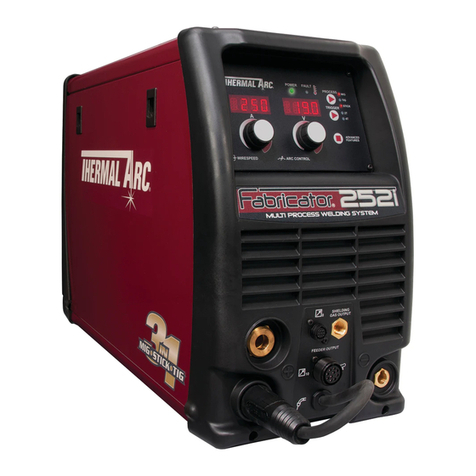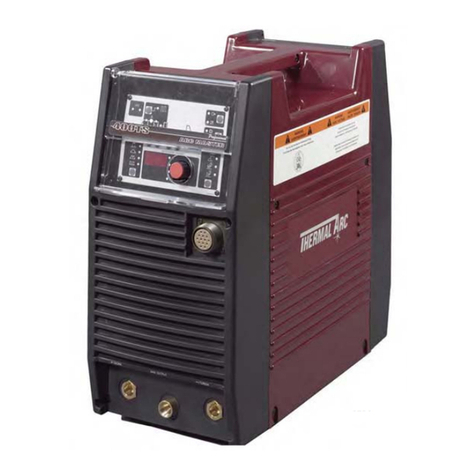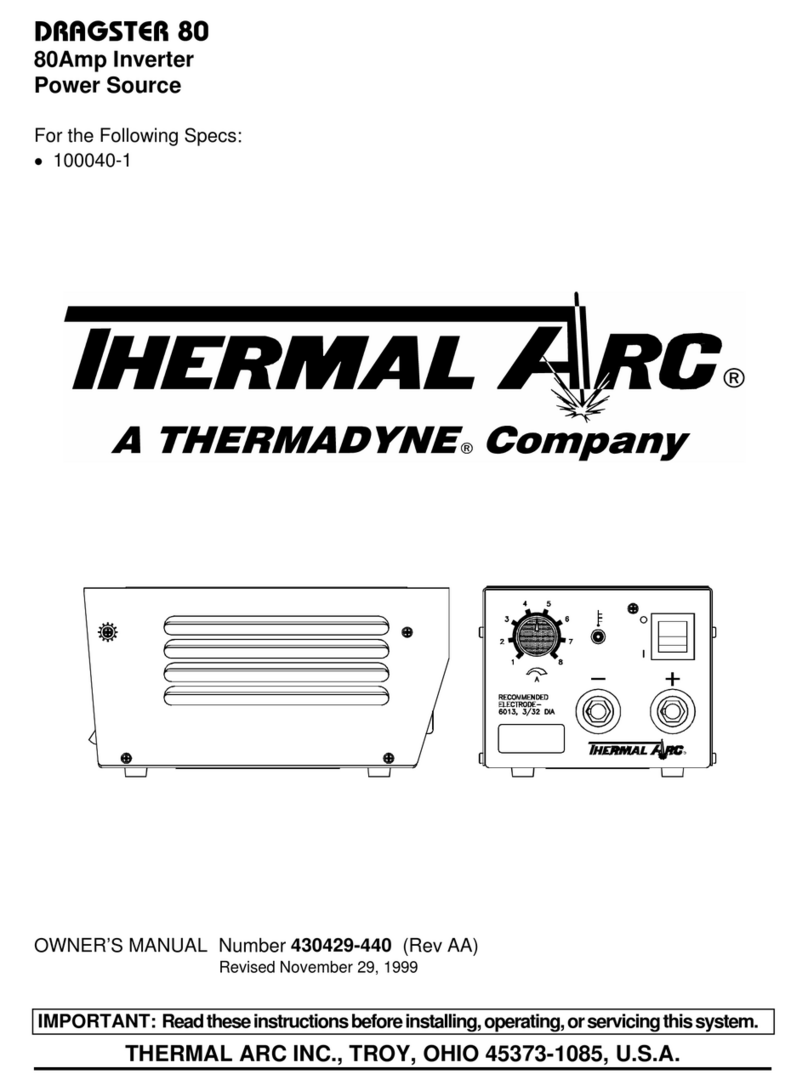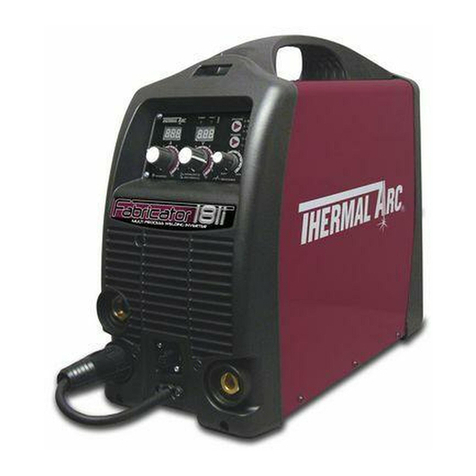
Notice NOT 034
THERMAL ARC 180 AC/DC Rev : 00
Date : 03/12/02
SAFETY
USER’S MANUAL
Page 7/36
constructing an electromagnetic screen enclosing the welding power source and the work complete with
associated input filters. In all cases electromagnetic disturbances shall be reduced to the point, where they
are no longer troublesome.
NOTE - The welding circuit may or may not be earthed for safety reasons. Changing the earthing
arrangements should only be authorised by a person who is competent to assess whether the changes will
increase the risk of injury, e.g. by allowing parallel welding current return paths, which may damage the earth
circuits of other equipment.
Further guidance is given in IEC 62081 "Arc welding equipment - Installation and use" (under consideration).
1.2.1. ASSESSMENT OF AREA
Before installing arc welding equipment the user shall make an assessment of potential electromagnetic
problems in the surrounding area. The following shall be taken into account :
a) Other supply cables, control cables, signalling and telephone cables, above, below and adjacent to the arc
welding equipment;
b) Radio and television transmitters and receivers;
c) Computer and other control equipment;
d) Safety critical equipment, e.g. guarding of industrial equipment,
e) The health of the people around, e.g. the use of pacemakers and hearing aids;
f) Equipment used for calibration or measurement;
g) The immunity of other equipment in the environment. The user shall ensure that other equipment being
used in the environment is compatible. This may require additional protection measures;
h) The time of day that welding or other activities are to be carried out.
The size of the surrounding area to be considered will depend on the structure of the building and other
activities that are taking place. The surrounding area may extend beyond the boundaries of the premises.
1.2.2. METHODS OF REDUCING EMISSIONS
1.2.2.1. Public supply system
Arc welding equipment should be connected to the public supply system according to the manufacturer’s
recommendations. If interference occurs, it may be necessary to take additional precautions such as filtering
of the public supply system. Consideration should be given to shielding the supply cable of permanently
installed arc welding equipment, in metallic conduit or equivalent. Shielding should be electrically continuous
throughout its length. The shielding should be connected to the welding power source so that good electrical
contact is maintained between the conduit and the welding power source enclosure.
1.2.2.2. Maintenance of the arc welding equipment
The arc welding equipment should be routinely maintained according to the manufacturers
recommendations. All access and service doors and covers should be closed and properly fastened when
the arc welding equipment is in operation. The arc welding equipment should not be modified in any way,
except for those changes and adjustments covered in the manufacturer’s instructions. In particular, the spark
gaps of arc striking and stabilising devices should be adjusted and maintained according to the
manufacturer’s recommendations.
1.2.2.3. Welding cables
The welding cables should be kept as short as possible and should be positioned close together, running at
or close to the floor level.
1.2.2.4. Equipotential bonding
Bonding of all metallic components in the welding installation and adjacent to it should be considered.

































